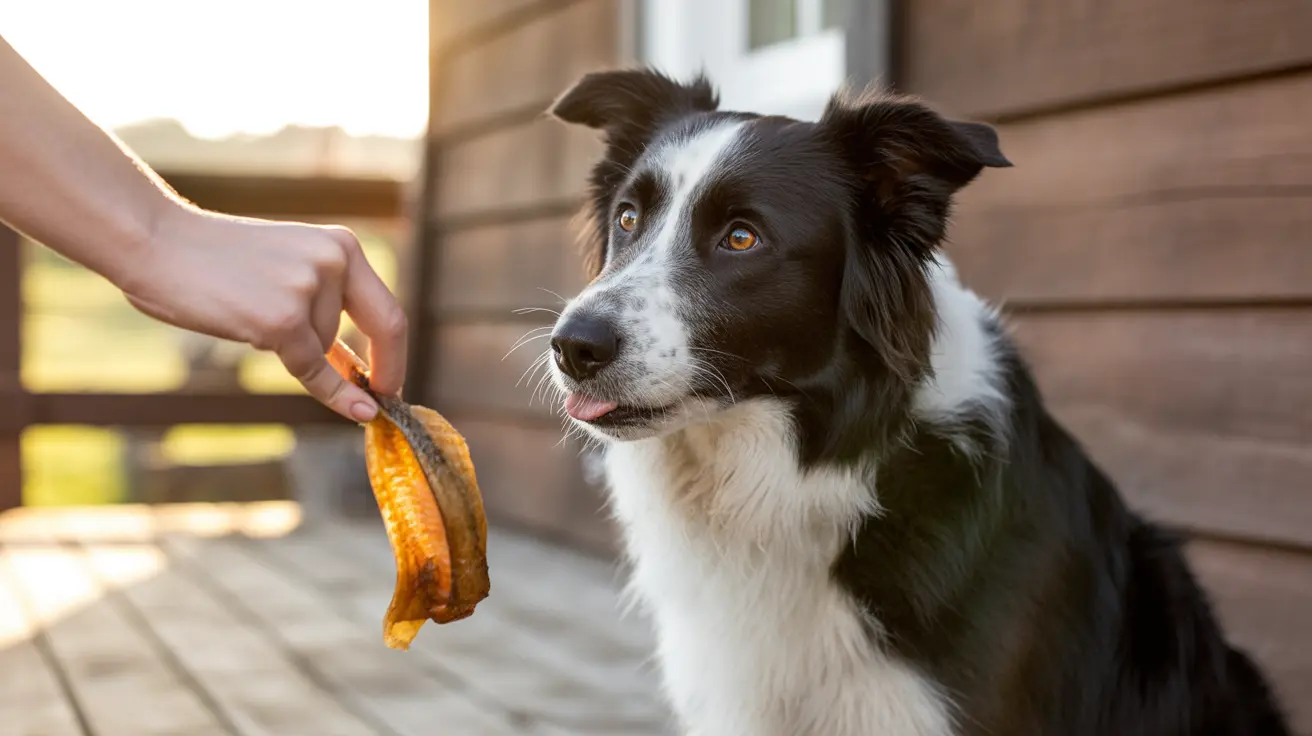The Health Benefits of Salmon Skin for Dogs
Salmon skin is packed with beneficial nutrients that can contribute to your dog's overall health:
Omega-3 Fatty Acids
The most significant benefit of salmon skin is its rich omega-3 fatty acid content, particularly EPA and DHA. These essential fatty acids support:
- Brain function and cognitive health
- Joint mobility and reduced inflammation
- Skin health and coat shine
- Heart health and circulation
Protein and Essential Nutrients
Salmon skin provides high-quality protein and contains important vitamins and minerals, including:
- B vitamins for energy metabolism
- Vitamin D for bone health
- Selenium for immune function
- Potassium for nerve function
Safe Preparation Methods
Proper preparation is crucial to ensure your dog's safety when feeding salmon skin:
Cooking Requirements
Always thoroughly cook salmon skin before feeding it to your dog. This eliminates harmful parasites and bacteria that could cause salmon poisoning disease, a potentially fatal condition. Never serve raw salmon skin to your dog.
Proper Preparation Steps
Follow these guidelines for safe preparation:
- Remove all bones completely
- Avoid using oils, seasonings, or spices
- Cook until fully done but not burnt
- Let cool before serving
Portion Control and Frequency
While nutritious, salmon skin should be given in moderation due to its high fat content:
Recommended Serving Sizes
- Small dogs: One small piece (about 1 inch square)
- Medium dogs: Two small pieces
- Large dogs: Three small pieces
Limit treats to once or twice per week to prevent excessive fat intake.
Potential Risks and Precautions
Be aware of these important considerations:
Watch for Signs of Allergies
Monitor your dog after introducing salmon skin for any signs of allergic reactions, such as:
- Itching or skin irritation
- Digestive upset
- Excessive scratching
- Vomiting or diarrhea
Quality Matters
Choose high-quality salmon sources:
- Opt for wild-caught when possible
- Ensure freshness
- Avoid farm-raised salmon with high mercury content
Frequently Asked Questions
Is salmon skin safe for dogs to eat, and how should it be prepared?
Yes, salmon skin is safe for dogs when properly cooked. Always thoroughly cook the skin without seasonings or oils, and remove all bones before serving.
What are the health benefits of feeding salmon skin to my dog?
Salmon skin provides omega-3 fatty acids, high-quality protein, and essential vitamins and minerals that support coat health, joint function, brain development, and immune system strength.
Can dogs eat raw salmon skin, or does it need to be cooked?
Never feed dogs raw salmon skin. It must always be thoroughly cooked to eliminate parasites and bacteria that could cause salmon poisoning disease.
How much salmon skin can I safely give my dog without causing health issues?
Serve salmon skin as an occasional treat, limiting portions to 1-3 small pieces depending on your dog's size, no more than twice per week.
Are there any risks or allergies my dog could have from eating salmon skin?
Some dogs may be allergic to fish products. Watch for signs of allergic reactions or digestive issues. Dogs with pancreatitis or those prone to weight gain should avoid salmon skin due to its high fat content.
Conclusion
Salmon skin can be a healthy, nutrient-rich treat for dogs when properly prepared and served in moderation. By following the safety guidelines and portion recommendations outlined above, you can safely incorporate this nutritious treat into your dog's diet. Always consult with your veterinarian before making any significant changes to your pet's diet, especially if they have existing health conditions.






